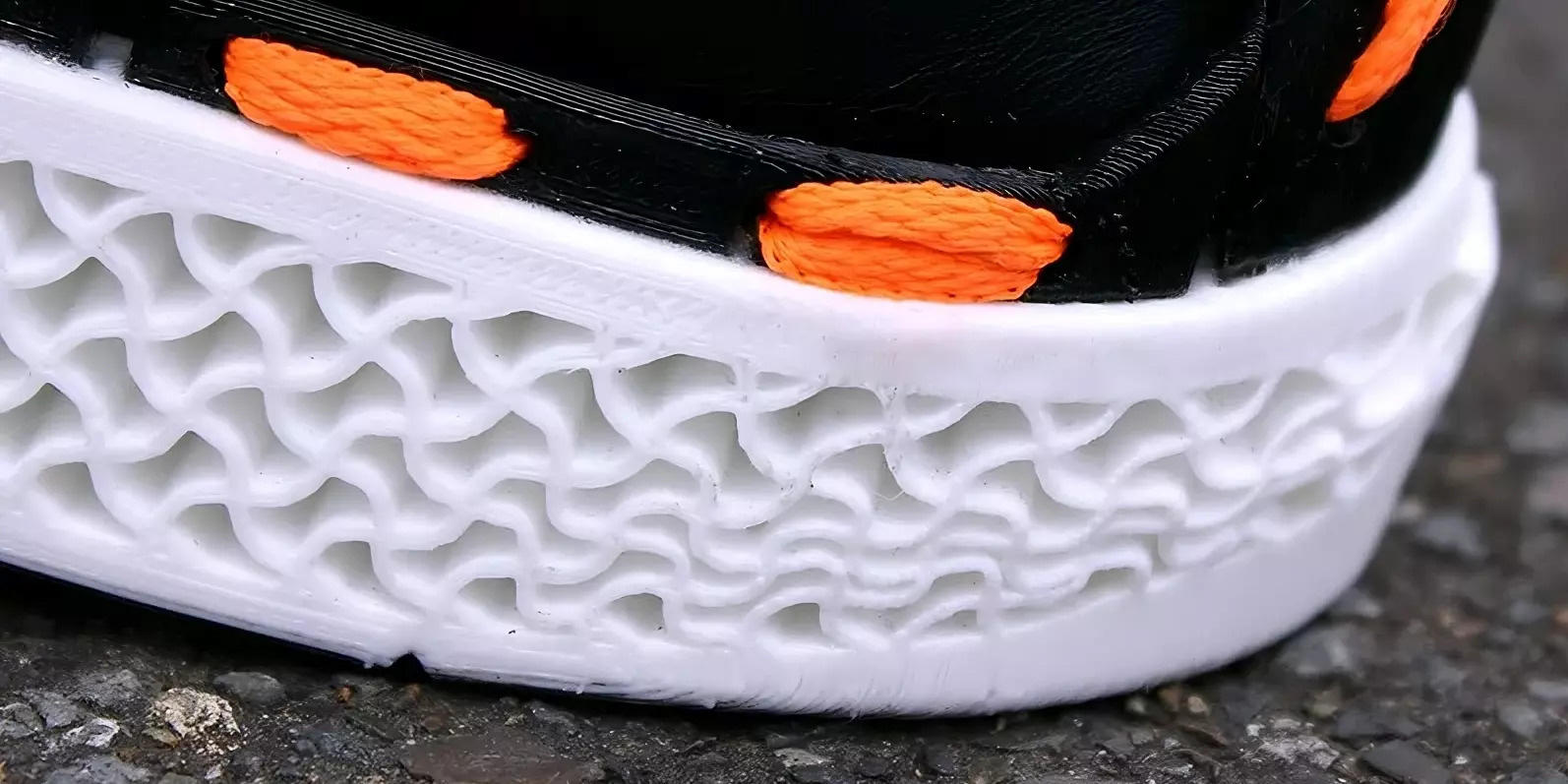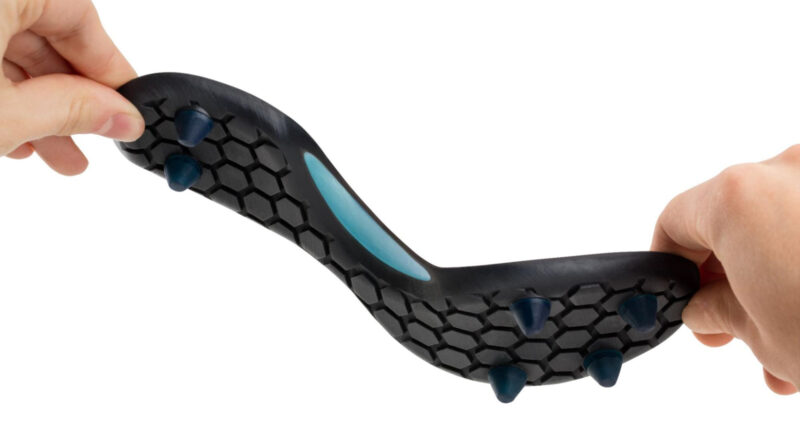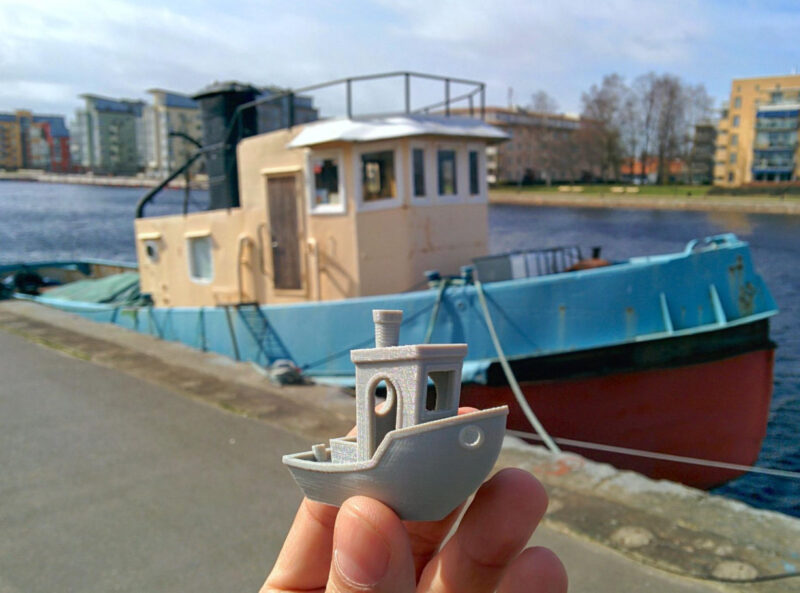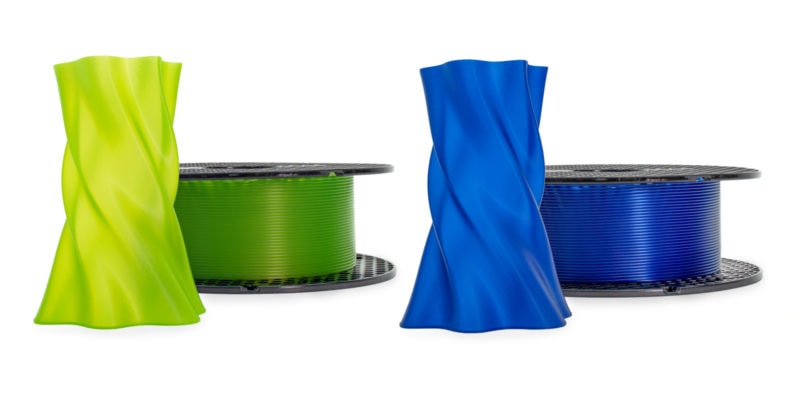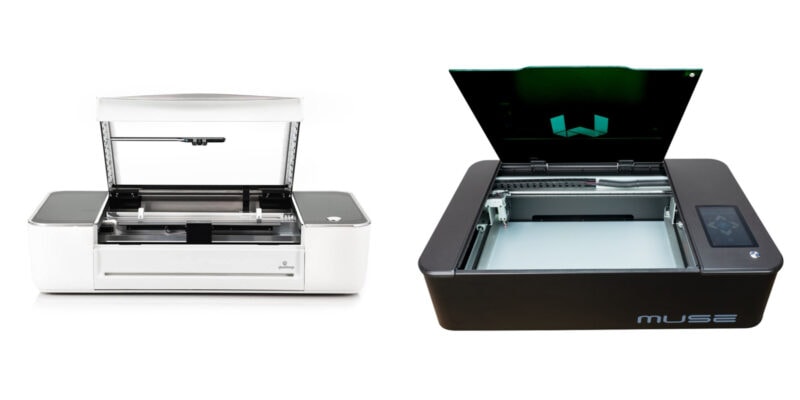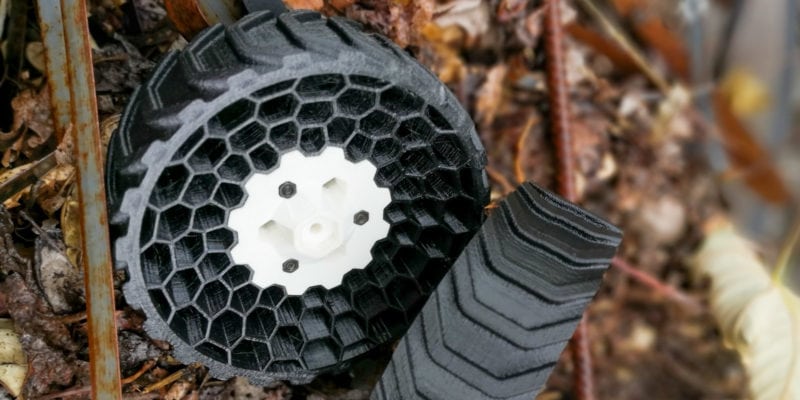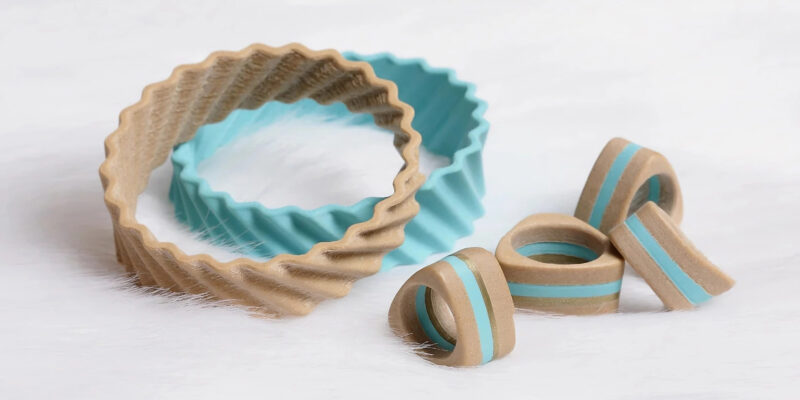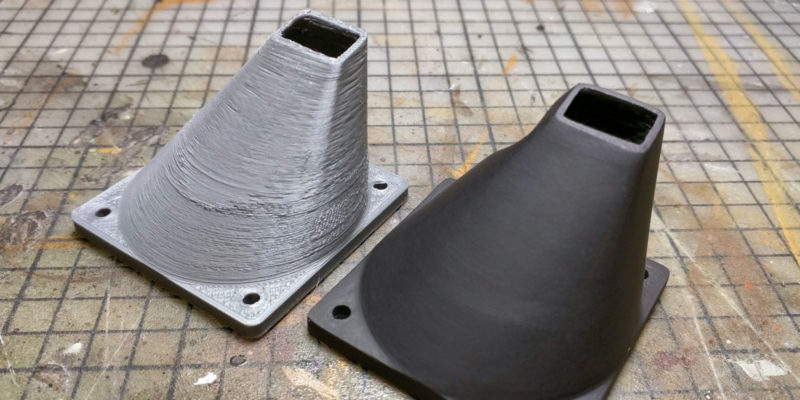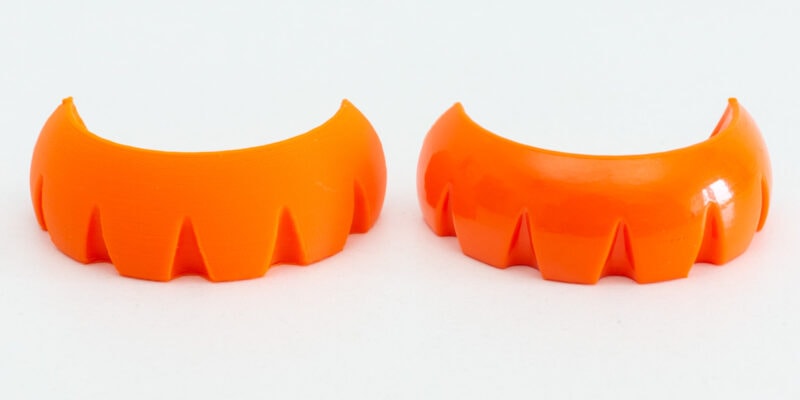PLA or TPU, which filament should you use for your project? While these two materials are both popular 3D printing filaments, they have vastly different properties and uses. Understanding when to use and how to combine them can take your 3D prints to a whole new level.
In this article, we’ll explain the basic differences between TPU vs PLA and show you important things to keep in mind during their use. In addition, we’ll introduce you to the exciting blend between the two materials: soft or flexible PLA.
When you are done reading, you’ll know exactly which of the three filaments is the best material for your future projects.
Let’s start bending the rules of 3D printing!
What is TPU Filament?
TPU (thermoplastic polyurethane) is a flexible rubber-like thermoplastic in the TPE family that is often used to make things like drive belts, medical devices, seals, gaskets, handles, prosthetics, tires, shoes, and more.
It’s a popular flexible filament in the 3D printing community because of its elasticity, though it can be challenging to use. Because it is so flexible, it is not always easy for the 3D printer extruder to feed it through to the hot end.
For this reason, TPU works best with a direct-drive extruder. Unlike a Bowden extruder, a direct extruder has less space between the extruder and the nozzle in which the flexible filament can buckle and get stuck.
What is PLA Filament?
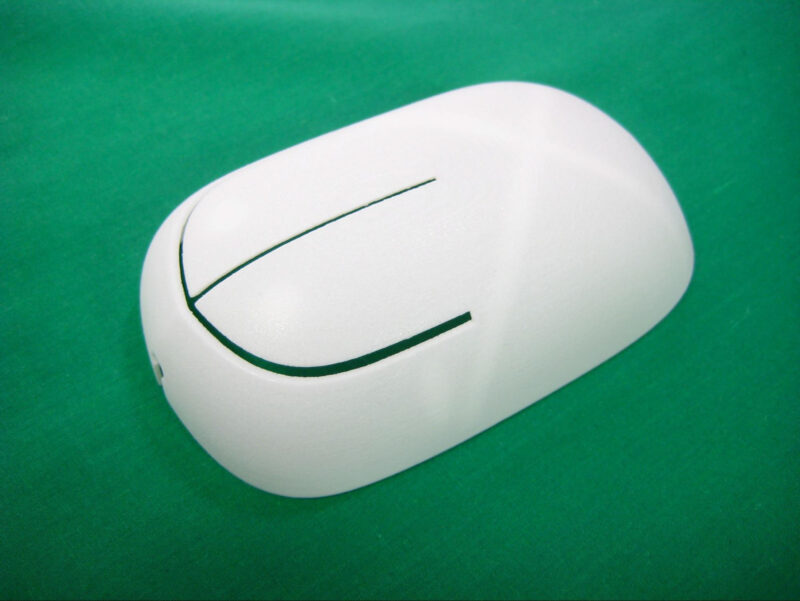
PLA is a popular bioplastic known as polylactic acid. It’s made from organic materials like sugarcane and corn starch and has a variety of industrial, medical, and consumer goods uses, like rapid prototyping, implanted medical devices, food containers and packaging, and more.
PLA is often one of the first filaments beginners use for 3D printing because its low melting point, shrinkage rate, and odors make it the easiest material to work with in a 3D printer. It is the most popular material that you can 3D print on basic machines. You won’t need an all-metal hotend, direct-drive extruder, an enclosure, or even a heated printing bed.
Comparing TPU vs. PLA
TPU is a flexible filament made for applications that require a high level of elasticity, whereas PLA is a rigid filament used in more general applications that need hard plastic. They both have different working properties and uses and it’s important how to make the best use of the two materials.
Strength
In terms of overall strength and durability, TPU is an especially resilient material. PLA has a decent tensile strength at 52-54 mpA, but TPU has a clear advantage with 47-82 mpA. This means TPU filament can handle significantly more pressure before it deforms from its original shape
TPU also has greater impact fatigue and abrasion resistance. This makes it suitable for shock absorption and repeated wear and tear. On the other hand, PLA can get brittle, which makes it more susceptible to impact fatigue and fractures.
Flexibility
As a thermoplastic elastomer, TPU filament has a clear advantage over hard plastic like PLA in terms of flexibility. PLA’s elongation at break is a mere 5-7%, whereas many TPU filaments boast a elongation at break of 200-500%.
This essentially means that TPU material can stretch up to two to five times longer than its original size before tearing. With PLA filament, you can only expect a small bit of stretching before your 3D printed object breaks. Clearly, TPU is the way to go for flexible parts.
Even so, TPU material is much more rigid than most other flexible materials (TPEs). It retains its shape much better under load and has a hard rubber texture.
Other TPEs tend to have a more gel-like consistency, so they flex and deform more easily. This makes TPU good for things like shoes, whereas soft TPEs are a better option for comfortable insoles.
Temperature
TPU and PLA material have similar characteristics in terms of printing temperature requirements. Both materials have a glass transition temperature of 60°C, though PLA’s melting point of 180°C is a bit lower than TPU’s 225°C.
As a result, you can use PLA and TPU without a heated bed or all-metal hotend in your 3D printing process.
However, PLA has significantly less temperature resistance than TPU. PLA needs a thermal trigger of around 50°C to begin degrading, whereas TPU generally doesn’t lose quality until 80°C.
So while TPU is slightly more durable to heat, neither 3D printing material can endure long-term exposure to high temperatures. For that, you’ll have to look at materials like ABS or Polycarbonate instead.
UV Resistance
Both TPU and PLA have decent UV resistance, but of the two, PLA is more susceptible to UV deterioration. While TPU is prone to yellowing from UV exposure, it doesn’t deteriorate from it.
PLA does see deterioration over time, but prolonged exposure doesn’t have a large impact on its mechanical properties.
Moisture
PLA and TPU are both hygroscopic, meaning that they absorb moisture from their surroundings. As such, it is important to store PLA and TPU 3D printing filaments properly when they are not in use. Keep them in a sealed bag or container with silica gel or some other kind of desiccant to prevent moisture absorption from the air.
It also helps to dry your filaments in a filament dryer, both before putting them in storage and after taking them out. This ensures that your 3D printer filament doesn’t create print quality issues from too much absorbed water.
Fumes
PLA filaments produce fewer noticeable fumes during the printing process than TPU, though both materials are significantly less noxious than materials like ABS and nylon. In terms of VOC emissions, both materials are on the safer end of the spectrum out of the most common 3D printing filaments.
However, all filaments have been shown to produce at least some harmful emissions (largely from common additives used in 3D printing filament) that can contribute to respiratory issues, so it’s important to use both PLA and TPU in a well-ventilated area and to try to avoid prolonged exposure.
Post-Processing
Post-processing your 3D prints is essential for removing layer lines, adding additional colors and details (through painting), and sealing the print to make them more food safe.
PLA is relatively easy to sand, whereas the flexibility and abrasion resistance of TPU make sanding it nearly impossible. You can expect to be able to smooth PLA most of the time, but TPU prints will keep their layer lines and texture.
Both PLA and TPU work with several different paints, such as acrylics, solvents, and spray paints. PLA usually needs a primer for a high-quality paint job. TPU and other flexible filaments, on the other hand, work surprisingly well with latex house paints, spray paints, and dyes.
Printability
When it comes to ease of use during 3D printing, PLA is more forgiving than TPU. PLA has a low printing temperature, good bed adhesion—often even without glue stick—and extrudes easily. You don’t need to upgrade your 3D printer to be successful with PLA filament.
TPU filament takes a lot more work to get good results. Because of its stretchiness, TPU has more issues with extrusion, clogs, and jams. Like all flexible filaments, TPU works best with a direct-drive extruder. However, it is possible to use a Bowden extruder if it doesn’t have a constrained filament path and if you use a slow printing speed.
TPU’s usual 3D printing temperature is usually only a little higher than PLA’s. Because neither is prone to bed adhesion issues or warping, you won’t need a heated print bed or enclosure for either material.
Soft/Flexible PLA: The Solution?
Because traditional PLA material is a hard plastic with little elasticity, filament manufacturers have developed a type of flexible material called soft PLA. It shares many of polylactic acid’s defining characteristics with the rubber-like flexibility of a TPE thrown in for the best of both worlds.
Like standard PLA, soft PLA is made from common materials like sugar cane, corn, and other organic plant matter. It’s biodegradable, low-odor, and low-temperature, ideal when it comes to 3D printing.
Unlike TPU, flexible PLA sands beautifully, so you can create smooth, flawless prints with fine details. With the right paints and top coats, you can make it appear like other materials such as metal or wood, making it perfect for comfortable cosplay armor and fashion pieces.
Benefits and Drawbacks of Soft PLA
Soft/Flexible PLA has several advantages over TPU and traditional PLA, but also has some weaknesses. As you can expect, it is difficult to create a filament that is ideal for every scenario and has the perfect material properties.
Pros
Flexibility
Soft PLA is an incredibly flexible material. It is less rigid than TPU, which makes it excellent for high-wear applications. It is also better for items that have prolonged skin contact, since its softer texture makes it easier to put on and more comfortable to wear for extended periods.
Safety
Flexible PLA is industrial compostable like normal PLA, so it is more environmentally friendly than other TPEs. Since it’s made from organic materials, it is more renewable and less toxic to produce than petroleum-based filaments.
As a modified polylactic acid product, soft PLA usually contains less harmful chemicals than the average flexible filament as well. This makes it safer to use in 3D printing—especially in or near your living areas. That said, you should still practice caution with prolonged exposure to any type of melted plastic. Even all types of PLA filament produce some VOCs.
Printability
Soft PLA prints at roughly the same temperatures as rigid PLA and doesn’t necessarily need a heated print bed for layer adhesion. This makes it just as easy to 3D print as the other two materials.
Durability
While traditional PLA is known for its brittleness, soft PLA’s flexibility solves that issue. As a result, you can use flexible PLA whenever you need flexible parts that are durable, and have increased impact resistance and toughness.
Cons
Flexibility
Unfortunately, the flexibility of soft PLA is both an advantage and a disadvantage. Because the material is so much softer and stretchier than TPU, it is harder to extrude.
Flexible filaments in general are difficult to use on a Bowden-style extruder, but TPU’s rigidity makes 3D printing it more forgiving. No such thing with soft PLA. There are people that have gotten soft PLA to 3D print on a 3D printer with Bowden extruder, but you can expect it to take a lot more trial and error.
Low Temperature
Like standard PLA, soft PLA is sensitive to heat. This makes it easier to print with, but it also negatively affects its overall durability. All three filaments (TPU, PLA, and soft PLA) print at roughly the same temps and have similar glass transition temperatures, so there’s none that stands out in this area.
When to Use PLA vs TPU vs Soft PLA
TPU
TPU is rigid like a hard rubber, so it’s perfect for when you want to print something that has some elasticity but still holds its shape. It’s the best material for shoes, drive belts, RC tires, skateboard wheels, phone cases, hoses, and other flexible prints that need some elasticity without deforming out of shape.
It’s also best for applications with repetitive wear and contact like machine parts, since it maintains its structure better over time.
PLA
As a hard plastic, PLA is great for prints that should be solid and rigid, such as statues, figurines, props, molds, decor, electronics cases, drones, organizers, toys, and tools. PLA works best for indoor items that don’t come into contact with water or heat.
You can also combine PLA with TPU or soft PLA when some components in an assembly need to be solid, with other parts flexible. For example, you can print non-load bearing parts in a 3D printed RC car in PLA and the wheel threads in TPU.
Soft/Flexible PLA
While flexible PLA is slightly softer than TPU, it still retains its form in most applications. Other flexible filaments, like softer TPEs, tend to sag and bend more easily. This makes soft PLA perfect for 3D printing projects that have to stay in their original shape but need a bit more elasticity for comfort.
Stoppers, soft tires, insoles, gel phone cases, jewelry, watch straps, cosplay armor, and other soft print objects are all good options for soft PLA. Anything wearable feels a bit more comfortable with the extra softness since it will conform to the shape of your body more easily than TPU.
PLA vs TPU in 3D Printing: Final Thoughts
After reading through this PLA vs TPU comparison, you have learnt that they are two different materials with different needs and uses. PLA is a hard plastic made from organic plant fibers. It is one of the easiest materials to 3D print thanks to its low temperatures needed for printing.
TPU is a thermoplastic elastomer designed for printing flexible parts. Soft PLA is the best of both worlds–it has all the environmentally friendly characteristics of traditional PLA combined with the rubber-like elasticity of a flexible filament.
All three materials have their uses. Depending on your 3D printing project, there’s one filament that will fit better than the others. Keeping the target durability and flexibility in mind is key to success.
Have you used soft PLA and other flexible filaments for your projects? Let us know in the comments!
